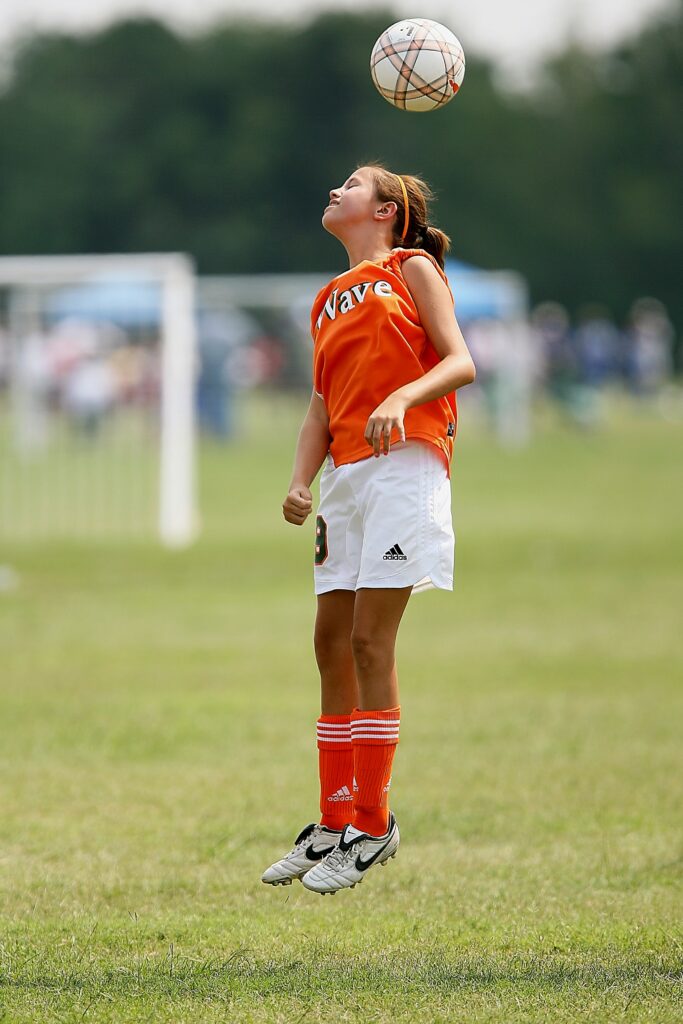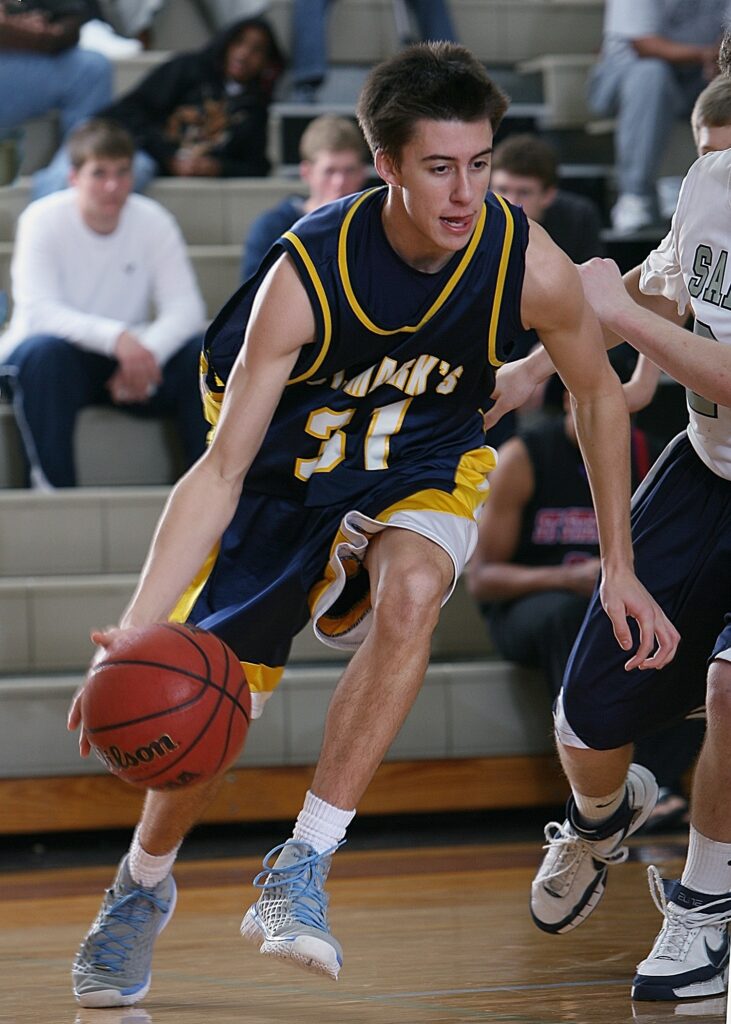Sports participation and regular exercise have been shown to promote the physical and emotional well-being of an individual. Exercise helps to reduce overall cardiovascular mortality in the general population. However, it may cause adverse effects in certain individuals with underlying cardiac conditions. This paradox of exercise is well described in athletes of all ages. But for the purpose of this blog post, we will focus our discussion on individuals younger than 35 years of age. Exercise induced Sudden Cardiac Arrest/Sudden Cardiac Death (SCA/SCD) in the young athlete is a rare, but catastrophic, event that is preventable with early identification of individuals at risk.
SCA is an unexpected collapse or abrupt loss of heart function in a person who may not have been diagnosed with heart disease. SCD is defined as the sudden unexpected death due to a cardiac cause, occurring within one hour of the onset of symptoms, with no other explanation for the death.

When SCA/SCD happens in young athletes, it has tragic consequences. Death of a young athlete is devastating not only to the family but to the whole community. Sudden death in the athletic field has caught media attention in recent years, bringing awareness to this pivotal issue. About 90% of SCD in young athletes occur during or immediately after exercise. Incidence is higher among males than females (9:1), African American athletes more than white, with the greatest number of SCDs occurring in male black basketball players.
Pre-participation cardiovascular screening of young athletes is aimed at detecting underlying cardiovascular disease to prevent SCA/SCD.
Causes for SCA/SCD in young athletes:
The risk of SCD is based on the age of the patient and the level of activity/sports. Sports alone is not the cause of SCD, but it can trigger SCA in predisposed individuals. Although young individuals who had SCD are considered outwardly healthy, many have undetected cardiac diseases as detailed below.
The major causes of SCA/SCD are:
1) Electrical disorders/rhythm disorders from the conduction system of the heart that can induce arrhythmia.
Commonly included among these are -three inherited rhythm disorders: Long QT syndrome (LQTS), Brugada syndrome, and catecholaminergic polymorphic ventricular tachycardia (CPVT). LQTS and Brugada syndrome can be diagnosed in an individual by a simple baseline resting EKG. They can also be suspected by family history of unexplained sudden deaths. Genetic testing can confirm the diagnosis of inherited rhythm disorder in an individual with suspected disease. Medications and/or placement of an automatic implantable cardioverter- defibrillator (AICD) is lifesaving in many of these individuals. CPVT is also an inherited arrhythmia; however, these patients’ baseline resting EKG is often normal. Clinical suspicion in a young individual should prompt the physician to obtain stress testing for identifying this entity.
2) Cardiomyopathies (cardiac muscle disorders) like:
- Hypertrophic obstructive cardiomyopathy (thickening of the heart muscle
- Dilated heart (dilated chambers of the heart due to weak muscles)
- Arrhythmogenic right ventricular cardiomyopathy (ARVC)-a form of cardiac disease where the heart muscle is replaced by fibrous fatty tissue
- LV non compaction (developmental disorder where cardiac muscle function is reduced)
3) Structural disorders of the heart like bicuspid aortic valve, aortic stenosis, left sided obstructive lesions, or congenital coronary anomalies.
4) Acquired conditions such as myocarditis after an infection.
5) Genetic connective tissue disorders such as Marfan or related aortopathies.
In adults >35 years of age, the above causes are replaced by coronary disorders that can cause coronary artery blockage leading to heart attacks.
Most of the above conditions can be screened by history and physical examination by primary care providers. In individuals with a greater index of suspicion, additional testing by a cardiologist may be required. The additional tests used by cardiologists are electrocardiograms, echocardiogram, Holter/event monitors, stress test and cardiac MRI (magnetic resonance imaging).

Pre-Participation Cardiovascular Screening
Few governing bodies exist over the proper guidelines for athletic screening of school-aged athletes and for SCD awareness. For cardiac screening, American law allows physicians to determine the scope of screening on an athlete-by-athlete basis, if they act according to standard accepted practice.
The 14-point history and physical examination recommended by American Heart Association (AHA) published in 2014 is the standard pre-participation cardiovascular screening recommended for high school athletic participation used by all states in the USA. The same is endorsed by American Academy of Pediatrics and American College of Cardiology. The detailed screening questionnaire includes personal history, family history and physical examination by a qualified medical professional. Personal history of exertional chest pain, exertional shortness of breath, unexplained syncope, presence of a heart murmur, elevated blood pressure, family history of premature death due to heart disorders in individuals < 50 years, family history of cardiac muscle disorders, electrical system disorders, and physical features of Marfan syndrome are considered reasons for referral to a specialist for evaluation. In addition to the above, AHA added prior restriction from sports participation by a medical professional or prior testing for heart ordered by a physician in 2014.
To date, EKG screening is a highly contested issue among clinicians. However, there is growing literature showing the value of adding EKG screening to the AHA questionnaire. AHA has never opposed EKG based screening initiatives in smaller venues with an understanding of the risks and benefits to all involved. Following the SCD of a student athlete in Brevard County, Florida, the County mandated a screening program and implemented EKG screening in a low-cost effective model. They found 8 out of 5877 individuals at risk for sudden cardiac arrest, who received treatment/preventive measures.

Many societies agree upon the value of adding EKG along with pre-participation cardiac screening. The addition of an EKG improves the sensitivity and specificity of screening. In the current era, quality EKG acquisition can be easily done with improved technology at low cost. This, combined with online reading from cardiologists, should help to resolve the previous concerns of including EKG in the pre-participation screening.
Pre-participation EKG screening is mandated in Italy and Israel, and recommended by many professional societies in Europe. Some states in the USA may be moving towards legislation to mandate pre-participation EKG for High School athletic screening based on currently available data. EKG screening is a simple non-invasive screening test that could save the life of a young athlete.
Summary of strategies for prevention of SCA/SCD in the young athlete:
- Mandate 14 point AHA pre-participation screening for all young athletes, which include personal and family history along with good physical examination as outlined by the AHA.
- Consider adding screening EKG, even though it is still a contentious issue. Improved EKG tracings at community level, and availability of cardiologists to read them online adds specificity to the screening and may reduce cost per life saved. Placing an automatic implantable cardioverter- defibrillator (AICD) can be highly effective in preventing SCD in at-risk individuals
- Exercise can trigger arrhythmias, and the use of AED (Automated External Defibrillator) within 5 minutes of SCA has been shown to improve survival. The survival rate of by stander CPR and the presence of shockable rhythm are greater in young athletes. Therefore, the availability of automated external defibrillator (AED) in athletic and public areas along with ‘hands only CPR trained’ individuals is an effective tool for reducing SCD.
- Repeat history & physical examination every 2 years- because a single normal screen may not exclude the later development of genetic or acquired heart disease.
Pediatric Cardiology – Johns Hopkins Regional Physicians/Children’s Heart Institute

Bibliography.
- Maron BJ, Friedman RA, Kligfield P, Levine BD, Viskin S, Chaitman BR, Okin P, Saul JP, Salberg L, Van Hare GF, Soliman EZ, Chen J, Matherne P, Bolling SF, Mitten MJ, Caplan A, Balady GJ, Thompson PS. on behalf of the American Heart Association council on clinical cardiology, advocacy coordinating committee, council on cardiovascular disease in the young, council on cardiovascular surgery and anesthesia, council on epidemiology and prevention, council on functional genomics and translational Biology, council on quality of care and outcomes research, and American College of Cardiology. Assessment of the 12-lead ECG as a screening test for detection of cardiovascular disease in healthy general populations of young people (12-25 years of age) a scientific statement from the American Heart Association and the American College of Cardiology. Circulation 2014;130: 13011334.doi:10.1161/CIR.0000000000000025
- Papadakis M, Malhotra A, Sharma S. Management of sudden cardiac death. Cardiac Genetics. Medicine Aug 2022; Volume 50: issue 8 (512-515)
- Krivenko GS, Ribeiro ER, Walker ST, Mercado-Gonzalez C, Sima S, Ernst E, Tisma-Dupanovic S, Dadlani GH. Feasibility of electrocardiogram screening in the USA prior to high school sport participation. Progress in Pediatric Cardiology June 2022; Volume 65: 101522
- William EA, Pelto HF, Toresdahl BG, Pruttkin JM, Owens DS, Salerno JC, Harmon KG Drezner JA. Performance of the American Heart Association (AHA) 14-Point Evaluation Versus Electrocardiography for the Cardiovascular Screening of High School Athletes: A Prospective Study. in J Am heart Assoc (JAHA)2019; 119:012235)
- Maron BJ, Levine BD, Washington RL, Baggish AL, Kovacs RJ, Maron MS, and on behalf of the American heart Association electrocardiography and arrhythmias committee of the council on clinical Cardiology, council on cardiovascular disease in the young, council on cardiovascular and stroke nursing, council on functional genomics and translational biology and the American College of Cardiology. Eligibility and disqualification recommendations for competitive athletes with cardiovascular abnormalities: task force 2: Preparticipation screening for cardiovascular disease in competitive athletes: a scientific statement from the American Heart Association and American College of Cardiology. Circulation 2015; Dec 1:132 (22)e267-72.
- Priori SG, Blomström-Lundqvist, C.; Mazzanti A, Blom N, Borggrefe M, Camm J, Elliott PM, Fitzsimons D, Hatala R, Hindricks\ G. et al. 2015 ESC Guidelines for the management of patients with ventricular arrhythmias and the prevention of sudden cardiac death: The Task Force for the Management of Patients with Ventricular Arrhythmias and the Prevention of Sudden Cardiac Death of the European Society of Cardiology (ESC) Endorsed by: Association for European Pediatric and Congenital Cardiology (AEPC) EP Europace November 2015; 17/11(1601-1687)
